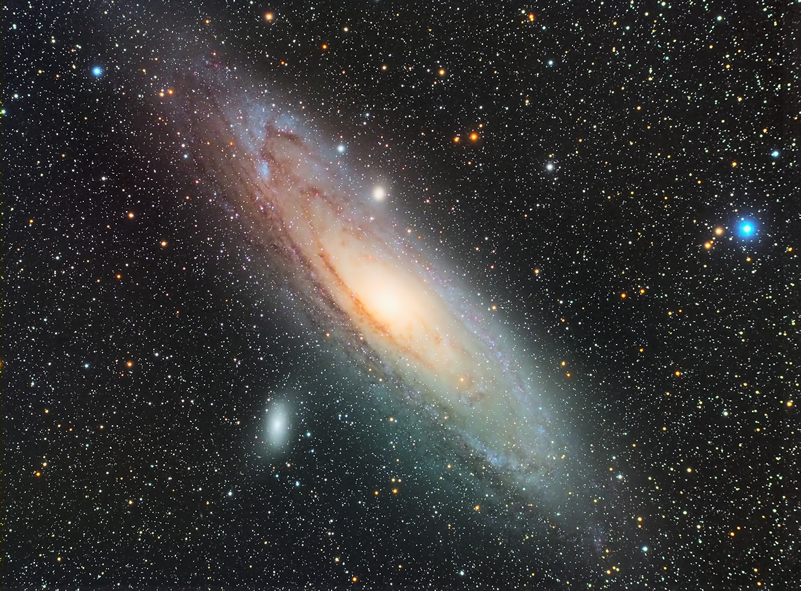
A Case Study of Two Galaxies - Using Doppler Shifts to Measure Motion in the Universe
Galaxy #1 - M31 or the Andromeda Galaxy
 |
| Figure 1: Messier 31 - The Andromeda Galaxy located 2.5 Mly away is a member of the local group of galaxies. (The King's University Observatory image) |
M31 is a big galaxy and largest member of the group of galaxies to which our own galaxy (The Milkyway) belongs. Shown below are two spectra - the first is the spectrum of a nearby star δ Andromedae in our own galaxy and the one beneath is a spectrum formed from the light from the central region of M31, 2.5 Mly away!. By measuring the respective places of known spectral lines in each galaxy we reach a startling conclusion - the Andromeda galaxy is approaching us at more than 300 km/s! Another way of saying this is that M31 is blueshifted relative to us. This is shown in the figure below for a spectral line formed by sodium atoms in each spectrum.
 |
| Figure 2: Spectra of δ Andromedae and M31 with combined line profile graph showing shift in the position of the spectral line produced by sodium atoms in the two bodies. (The king's University Observatory images) |
The spectrum of M31 is shifted toward the blue by a small but easily measured amount of Δλ = -6.3 A. Using the Doppler Shift Formula:
Solving for v we get v = (-6.3/5890)(300 000 km/s) = -321 km/s. The negative sign means the galaxy is coming towards us! (Don't fret - at a distance of 2.5 Mly our galaxies will collide in about 2.4 billion years!)
Galaxy #2 - NGC 1275
 |
| Figure 3: Hubble Space Telescope image of NGC 1275 |
NGC 1275 is a remarkable galaxy, located approximately 250 Mly away in the constellation Perseus! It is a member of the Seyfert class of galaxies and has intensely active core - possibly harbouring a supermassive black hole! The spectrum of this galaxy shows intense emission lines and is shown below along with the spectrum of the bright star Algol located about 100 ly away. Now, the spectrum of NGC 1275 is redshifted by a very large amount.
 |
 |
| Figure 4: Spectra and profiles for Algol and NGC 1275 with two prominent Balmer lines of Hydrogen identified. (The king's University Observatory images) |
In the case of NGC 1275 the hydrogen lines are redshifted by a very large amount relative to Algol. For the line designated Hβ the shift is Δλ = +87.3 A which then tells us v = (87.3/4860)(300 000 km/s) = 5388 km/s.
At this distance we are measuring the expansion of the universe!